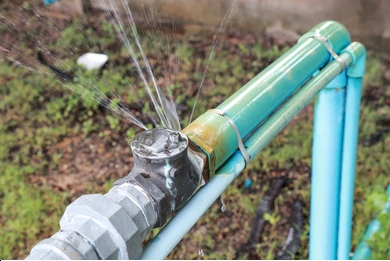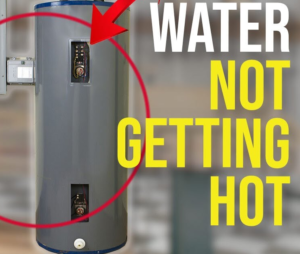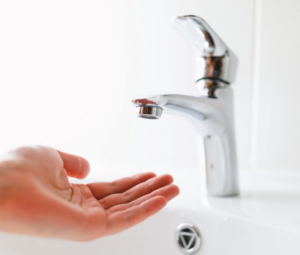A busted water pipe is one of the most urgent and stressful situations homeowners face. Water damage can escalate rapidly, leading to costly repairs if not addressed promptly. Knowing how to fix a busted water pipe quickly is essential for minimizing damage and restoring your plumbing system. In this guide, we’ll walk through the steps you can take to repair a busted pipe efficiently while highlighting key precautions to avoid further complications.
1. Identifying the Problem
The first step in addressing a busted water pipe is recognizing the signs of a problem. Some common indicators include:
- Decreased Water Pressure: If water pressure suddenly drops in your home, it could indicate a burst pipe.
- Water Stains: Look for discoloration on walls, ceilings, or floors, which might be caused by leaking water.
- Pooling Water: Unexplained puddles or damp areas around your home are clear signs of a burst.
- Unusual Sounds: If you hear banging or hissing sounds in your walls, it could be due to a broken water pipe.
Once you notice any of these signs, it’s critical to act fast to prevent water damage from spreading.
2. Turn Off the Main Water Supply
As soon as you suspect a pipe has burst, turn off your home’s main water supply. This will prevent more water from flooding your home and reduce the risk of further damage. The shut-off valve is typically located near the water meter, in the basement, or outside your home. Be sure to familiarize yourself with the location of this valve before any emergencies occur.
If you’re unable to locate or shut off the main water valve, contact a professional immediately for assistance.
3. Drain the System
After shutting off the main water supply, you need to drain the remaining water from your pipes. Open all faucets throughout your home, starting from the lowest point and working your way up. This allows any water left in the pipes to escape, which will minimize the chance of additional leaks while you work on repairs.
4. Locate the Burst Pipe
The next step is to locate the specific section of the pipe that has burst. You may need to inspect walls, ceilings, or floors to find where the leak is coming from. In many cases, pipes will burst in areas that are exposed to freezing temperatures, such as basements, crawl spaces, or attics.
Once you find the damaged pipe, carefully assess the severity of the damage. If the break is extensive or the pipe is located in a hard-to-reach area, it might be necessary to call a licensed plumber for help.
5. Repairing the Busted Pipe
Depending on the extent of the damage, there are several methods to repair a busted water pipe:
Pipe Clamps
If the break is small, a pipe clamp can be used as a temporary fix. These clamps are easy to use and can stop the leak until a more permanent solution is found. To apply a pipe clamp:
- Dry the area around the burst pipe.
- Place the clamp over the damaged section.
- Tighten the clamp to secure it in place.
This method can hold for a while, but it is not a long-term solution. You’ll still need to address the pipe’s damage with a permanent repair.
Epoxy Putty
Epoxy putty is another temporary fix for small leaks. It works well for minor cracks or holes in pipes. To use epoxy putty:
- Turn off the water and dry the area around the leak.
- Mix the epoxy putty according to the manufacturer’s instructions.
- Apply the putty directly to the damaged area and smooth it out.
- Allow the putty to harden, which typically takes about 30 minutes.
While epoxy putty can be effective, like pipe clamps, it should only be used as a short-term solution. Replacing the damaged pipe section is the best long-term fix.
Pipe Replacement
For more severe damage, it’s often best to replace the damaged section of the pipe. Here’s how you can replace a busted pipe quickly:
- Cut the Pipe: Use a pipe cutter or hacksaw to cut out the damaged section of the pipe. Be sure to measure and cut carefully, ensuring you remove the entire damaged area.
- Smooth the Edges: After cutting the pipe, use sandpaper or a deburring tool to smooth the edges of the remaining pipe. This will ensure a proper fit for the new pipe section.
- Install a Replacement Pipe: Measure and cut a new section of pipe that matches the length of the section you removed. Use pipe connectors or couplings to attach the new pipe to the existing plumbing. Be sure to follow the manufacturer’s instructions for tightening the connectors.
- Seal the Joints: Once the new pipe is in place, use pipe sealant or plumber’s tape on the joints to ensure a tight, leak-proof connection.
- Test the Repair: Turn the water supply back on and check for any leaks. If the repair was successful, the water should flow smoothly without any signs of leakage.
6. Prevent Future Pipe Bursts
After repairing a busted pipe, it’s important to take steps to prevent future issues. Busted pipes often occur due to freezing temperatures or excessive pressure. Here are a few tips to help protect your plumbing system:
- Insulate Pipes: Insulating your pipes, especially in unheated areas like basements or attics, can prevent them from freezing during the winter months.
- Seal Cracks and Openings: Check for any cracks or openings in your home’s walls or foundation that could let in cold air, and seal them to prevent pipes from freezing.
- Maintain a Consistent Temperature: Keep your home heated, even when you’re away, to ensure pipes remain at a safe temperature during colder months.
- Check Water Pressure: High water pressure can also lead to pipe damage. Install a pressure regulator if needed to maintain safe levels within your plumbing system.
7. When to Call a Professional
While many minor pipe repairs can be handled by homeowners, there are certain situations where it’s best to contact a professional. If the damage is extensive or if the pipe is located in a difficult-to-access area, a plumber can make the necessary repairs safely and efficiently. In Plano, TX, Chrome Heating Air Conditioning provides expert plumbing services, including emergency pipe repairs. With their help, you can ensure that your home’s plumbing system is restored quickly and properly.
Conclusion
Knowing how to repair a busted water pipe quickly can save you time, money, and the headache of extensive water damage. Whether using temporary solutions like pipe clamps or opting for a more permanent fix, it’s essential to act fast to prevent further damage. However, if you’re unsure or facing complex issues, don’t hesitate to reach out to professionals like Chrome Heating Air Conditioning in Plano, TX. With the right tools and knowledge, you can tackle a burst pipe and keep your home safe from water damage.
By following these steps and taking preventive measures, you can protect your plumbing system from future issues and avoid the costly consequences of water damage.
FAQ
What are the signs of a busted water pipe?
- Common signs of a busted water pipe include low water pressure, water pooling in unexpected areas, high water bills, water discoloration, and unusual noises like banging or hissing from the pipes.
2. What should I do first if I discover a busted pipe?
- The first step is to turn off the main water supply to prevent further water damage. Then, drain the remaining water by opening faucets and flushing toilets.
3. Can I repair a busted water pipe myself?
- Yes, minor leaks or cracks can be repaired with tools like pipe clamps, pipe sleeves, or epoxy putty. However, for significant damage or if you’re unsure of the repair process, it’s best to call a professional plumber.
4. How do I fix a minor leak in a water pipe?
- For small leaks, you can use a pipe repair clamp, epoxy putty, or a pipe sleeve. These temporary solutions will seal the leak and prevent water from escaping until a permanent fix is in place.
5. What materials do I need to repair a busted water pipe?
- You will need pipe clamps, pipe sleeves, epoxy putty, a wrench, a pipe cutter, and possibly replacement pipe sections depending on the severity of the damage.
6. How long does it take to repair a busted water pipe?
- A minor repair may take 30 minutes to an hour, while larger repairs or pipe replacements may take several hours or even a full day, depending on the complexity.
7. Can a busted water pipe cause structural damage to my home?
- Yes, if left unrepaired, a busted water pipe can lead to severe water damage, including mold growth, weakened structural integrity, and damage to walls, ceilings, and floors.
8. How much does it cost to repair a busted water pipe?
- The cost can vary depending on the extent of the damage, the location of the pipe, and whether you hire a professional. Minor repairs may cost $100 to $300, while more extensive damage can exceed $1,000.
9. How can I prevent my water pipes from busting?
- Preventive measures include insulating pipes in cold areas, regularly checking for leaks, maintaining consistent water pressure, and keeping the thermostat above freezing during cold weather.
10. When should I call a plumber for a busted pipe?
- If the pipe has a large crack or burst, or if you’re unable to locate the leak or stop the water flow, it’s best to call a professional plumber immediately for emergency repair.





